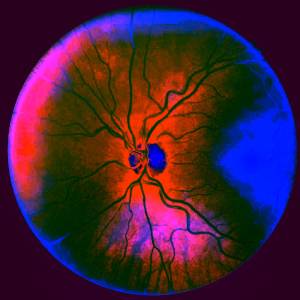Calne
The Blue Plaque series was meant to occur occasionally when I had not been anywhere, but as this month to date only three blips have been more than walking distance from my home and I'm fast running out of Calne blue plaques.
There isn't a plaque to commemorate Priestley House, although it is quite historic. Priestley House was indeed the home of Joseph Priestley from 1772 to 1779, as it says on a plate above the door-knocker, while he was working on scientific projects with his friend Lord Shelburne at Bowood House in a laboratory specially set up for him there. His experiments were almost entirely confined to the study of "air", and included the six volumes of Experiments and Observations on Different Kinds of Air (1774–86). He was a proponent of the phlogiston theory, which stated that the combustion or oxidation of a substance corresponded to the release of a material substance, namely 'phlogiston', and this led to his discovery of oxygen, which he called 'dephlogisticated air'.
By this time he had moved to the Old Vicarage in Mill Street, where he could often be found wading in the pond at the bottom of the garden conducting experiments. This is the real location of Doctor’s Pond, rather than the stretch of water on the Marden with the plaque describing it as such, close to the Co-Op.
In 1774 Lord Shelburne and Priestley toured Europe and returned "much improved by this view of mankind at large", according to Priestley's friend Theophilus Lindsey. Priestley also became a political adviser to Shelburne, gathering information on parliamentary issues and serving as a liaison between Shelburne and the Dissenting and American interests.
Although much altered since, nos. 19 (Priestley House) and 20 The Green and the White Hart (at the south-west corner of the Green) were erected as one building in the 16th century and share one semi-basement. The façade of Priestley House is dated 1758 when it and no. 20 were refronted by the Child family of Heddington, having been rebuilt mainly in the 17th century.
It is a house I used to visit quite often in the nineties when I had friends who lived there.
C16; refronting dated 1758. Limestone ashlar, coursed
rubble sides, right-hand ashlar gable stack and slate and
pantile roof. Double-depth plan with a long rear W wing.
2 storeys, attic and semi-basement; 3-window range. Divided by
plinth, plat band, thin cornice and parapet, with roll-moulded
coping to front gables, and parallel gabled range behind.
Entrance between left-hand windows has a raised surround with
pediment, and swept steps and curtail up with a wrought-iron
railing to a 6-panel door. Paired mid C18 windows in raised
surrounds to slightly recessed 9/6-pane sashes with thick
glazing bars. 2 large early C19 hipped 4-light dormers with
leaded casements, and a smaller 6-pane dormer between. 3
basement openings have ovolo mullions, of 3 lights to the
centre and right, and 4 to the left. A panel above the door
inscribed C/F*E/1758. The left-hand gable has a window in a
former door; the rear gable has altered C20 mullion and
transom ground- and first-floor windows, and a chamfered
stone-mullioned attic window.
S front has a central Tudor-arched doorway with chamfered
reveals, and a long W range, a C17 former malthouse with
blocked 2-light mullion windows to semi-basement, later C18
2-light wood-framed windows inserted with segmental-arched
lunette window in S gable, and 3 small eaves gables to the
attic drying floor.
INTERIOR not inspected but reported to include a C16
full-width semi-basement remodelled C17; 4-centre ovolo
moulded doorhead re-used with C17 chamfered jambs; 5-centred
arched stone lintel to fireplace with moulded head converted
for use as oven. Ground and first floors with chamfered oak
beam and floor boards. C17 fireplaces; first-floor hob grates.
Later C16 moulded wall beam re-used as doorway lintel in
malthouse. Rear dormers show ends of extended collar beam
trusses.- British Historic Buildings
L.
19.12.2014 (1810 hr)
Blip #1448
Consecutive Blip #010
Day #1731
LOTD #683 (#803 including archived blips)
Lens: Pentax 12-24 mm
Calne series
Lozarhythm Of The Day:
Misty In Roots - Introduction & Mankind (recorded live at the Counter Eurovision, 1979)
"When we trod this land, we walk for one reason. The reason is to try to help another man to think for himself. The music of our hearts is roots music: music which recalls history, because without the knowledge of your history, you cannot determine your destiny; the music about the present, because if you are not conscious of the present, you are like a cabbage in this society; music which tells about the future and the judgement which is to come."
One year ago: Slimbridge WWT

Comments
Sign in or get an account to comment.


